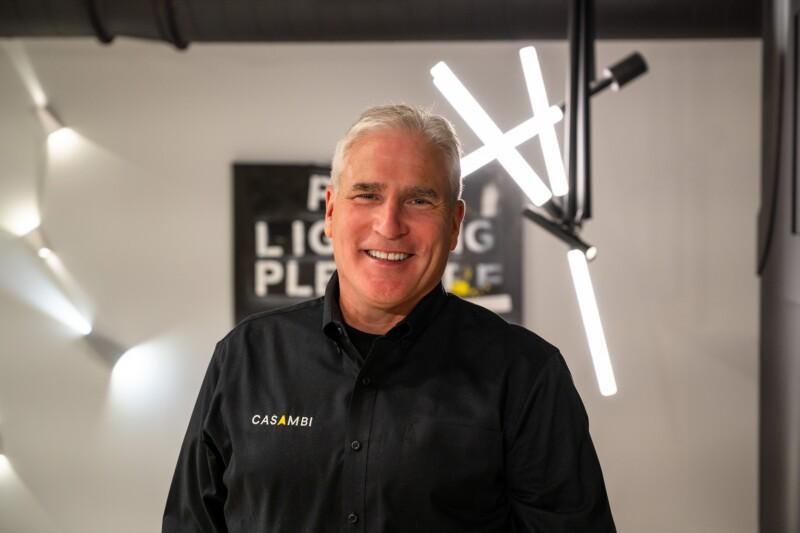Searching for futureproof lighting controls? Then look no further…

The world of lighting controls is changing at an incredible pace. How can users make sure the systems they install today are fit for tomorrow? Timo Pakkala, founder of Casambi – the world’s leading provider of smart wireless lighting control software, explains why futureproof light controls are already here.

Lighting control technology has advanced further in the past decade than in the previous century.
LEDs allow more sophisticated and precise control than ever before, while wireless technology means it is possible to control lights from a handheld device.
On one hand, that’s great news for customers. On the other hand, the pace of change makes buying decisions tougher. How do you know that your lighting systems are fit for the future? Will they still be working in a few years’ time, as technology continues to move forward? Will they remain compatible with the latest systems? And will it be possible to maintain them?
This is a particular concern for lighting controls, which rely heavily on software that may need to be updated to stay compatible with other systems, and to protect against security threats.
The rise of the internet of things (IoT) brings its own set of futureproofing challenges. With devices hooked up to the net and communicating with each other, it’s more important than ever for them to stay compatible. But many of today’s so-called ‘smart’ devices have no way of being updated, meaning they will rapidly become obsolete.

A brand new control system from Finnish technology firm Casambi offers a solution to this. Casambi’s unique solution is based on Bluetooth Low Energy – the state-of-the-art radio communications technology that’s built ‘ into every smartphone, tablet and laptop made in the last five years or so.
While dedicated lighting control devices can quickly become obsolete and difficult to maintain or replace, smartphones are here to stay, and so is Bluetooth. Furthermore, firmware updates for Casambi devices are delivered over-the-air, making it easy and cost-effective to upgrade products without having to remove or replace them.
The system is also ready for emerging new functionality in lighting products made possible by the IoT – such as sensors that can detect presence, movement, temperature or CO2 levels, and location beacons that can help shoppers navigate stores.
As its name suggests, the Bluetooth Low Energy technology that lies behind Casambi is ideal for devices that run on very low power levels, so it’s perfect for things like switches and sensors. If you want to be ready to reap the benefits of the IoT, a Casambi-enabled system means you’re good to go.

As for security, Bluetooth-based systems are simply the best option out there today. Wi-Fi-enabled devices such as fridges, TVs and cameras are already succumbing to online hackers, but Bluetooth devices don’t run the same risks. This is because, unlike Wi-Fi, Bluetooth only operates when it’s needed, and is not directly connected to the internet. The only time you need to go online is to update the firmware.
Compared to other lighting control systems, Casambi has futureproofing right at its heart, because it has been designed and developed for the world of 2017, rather than being built on the basis of DALI, DMX, 1-10V or any other lighting control standard.
Most of today’s lighting control systems have attempted to shoehorn themselves into one of these existing standards, which are already decades old. As a result they are tied to structures and processes that simply don’t make sense in a world where technology has moved on. By making a break with the past, Casambi ensures it will remain fit for the future.
Many devices claim to be ‘smart’, but in reality some are smarter than others, and futureproofing is a key factor differentiating the good from the bad.
We believe that a truly smart device isn’t just one you can communicate with. It’s one that has been designed so that it can be continually updated and maintained, maximising its lifespan and giving the customer confidence.


